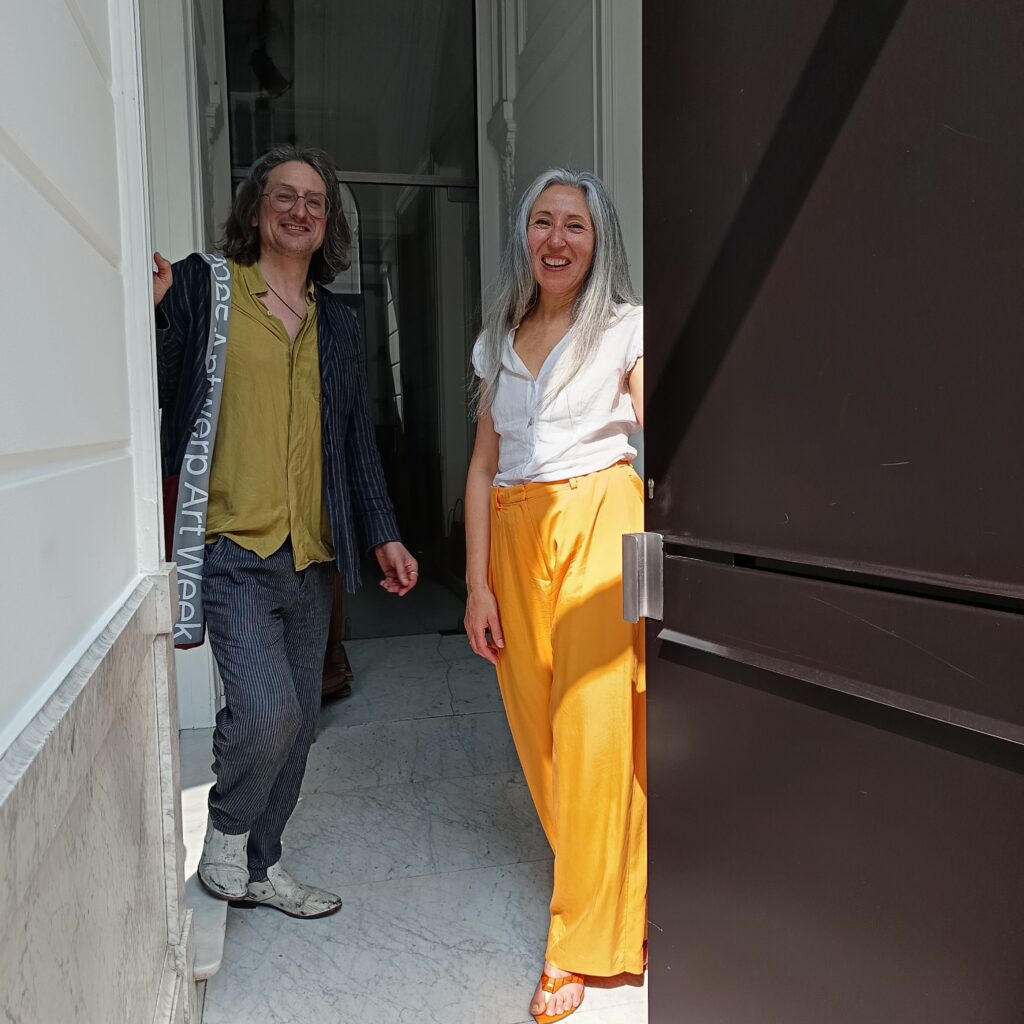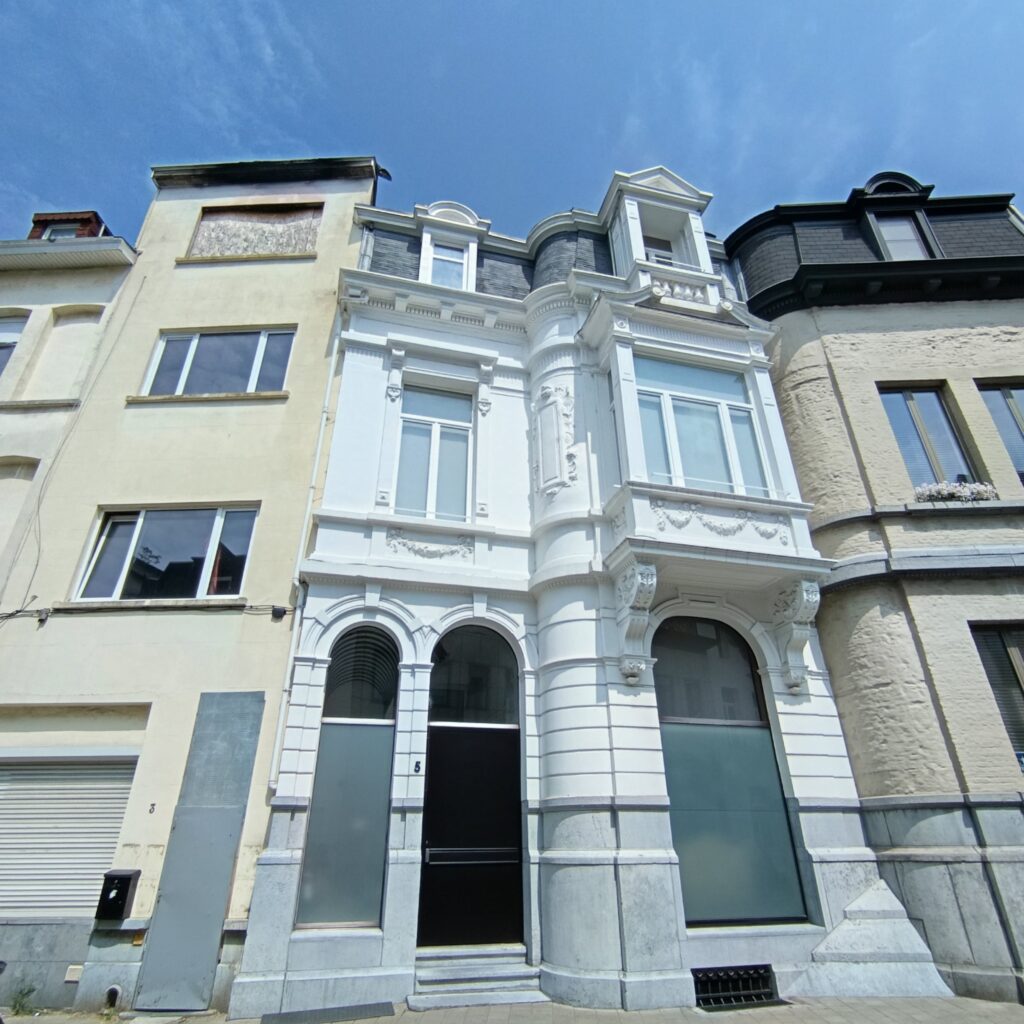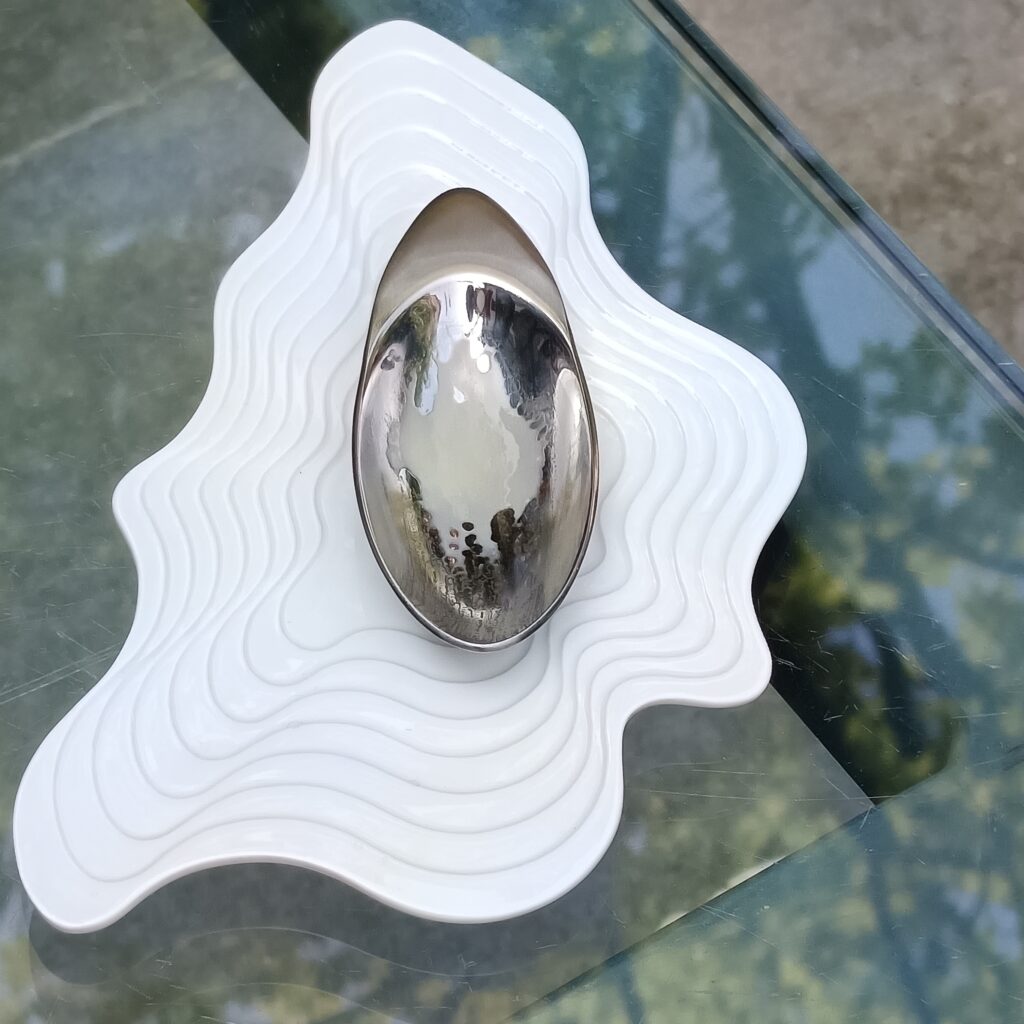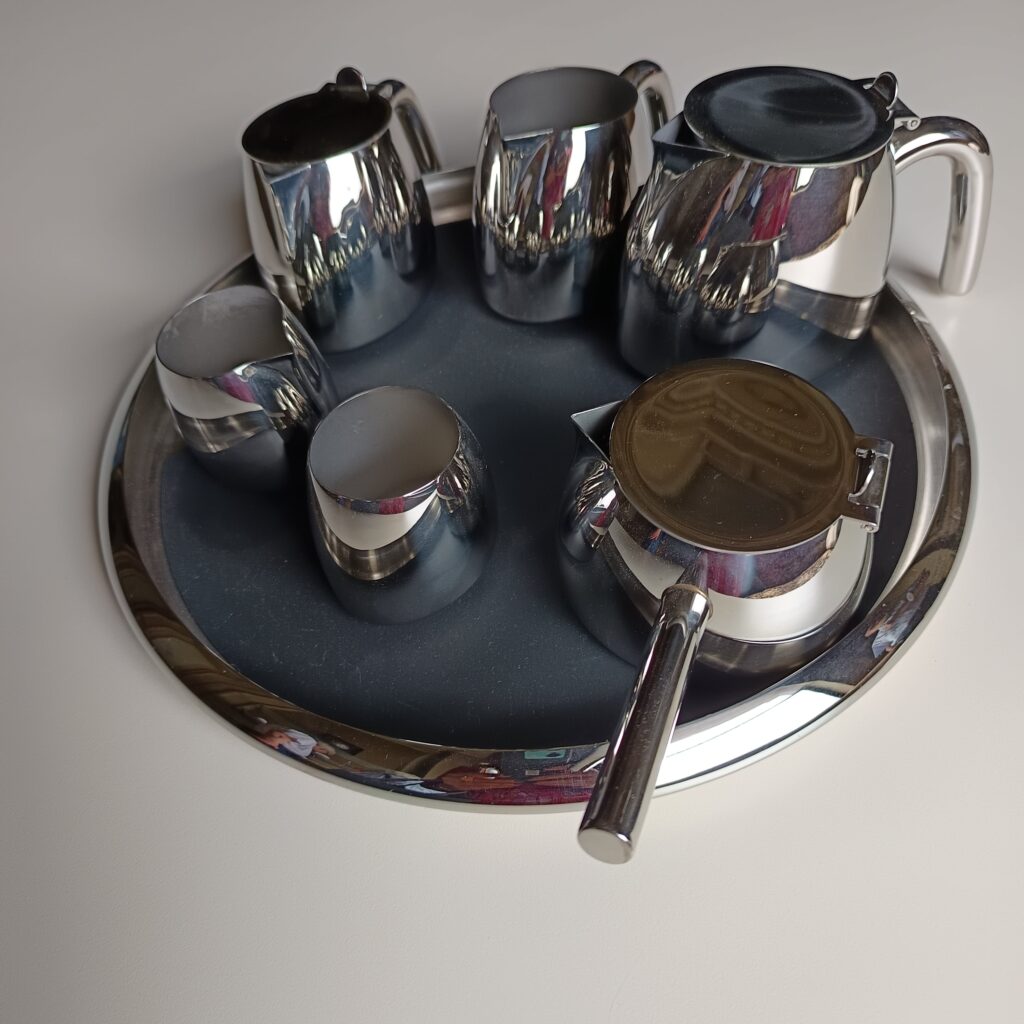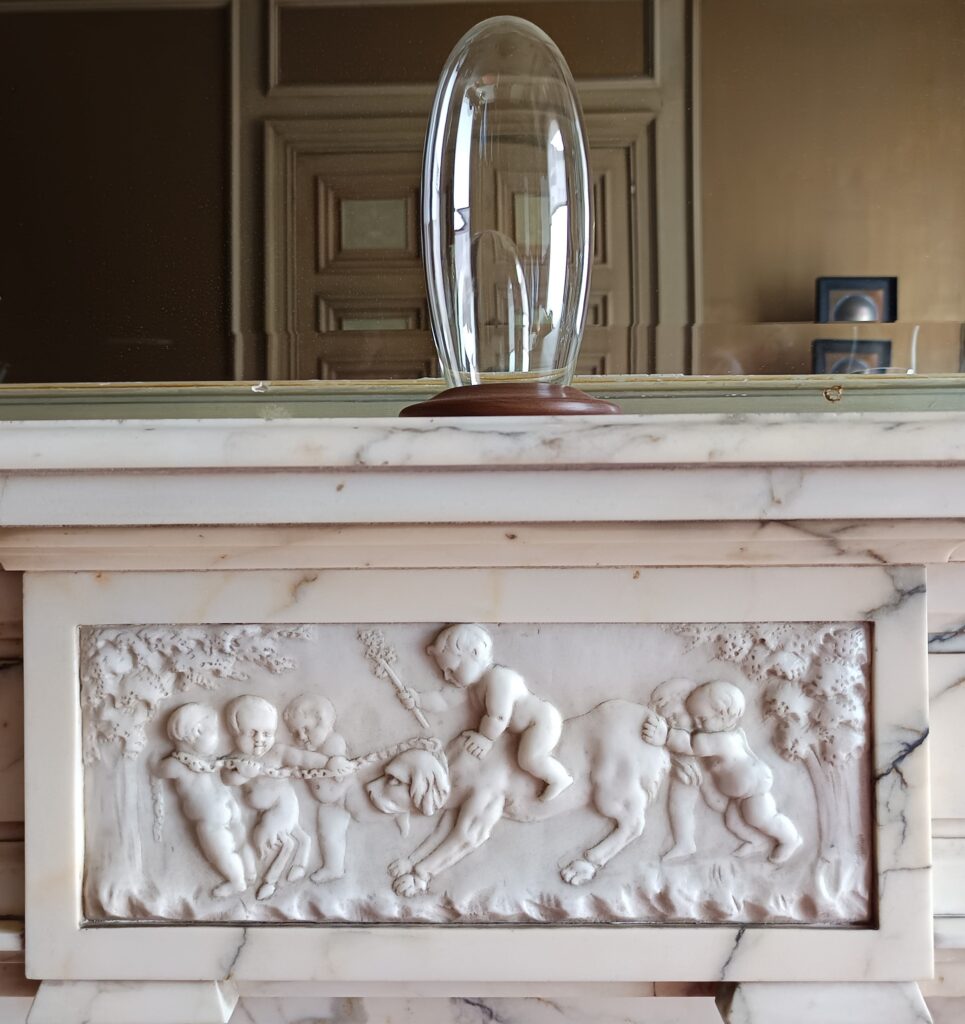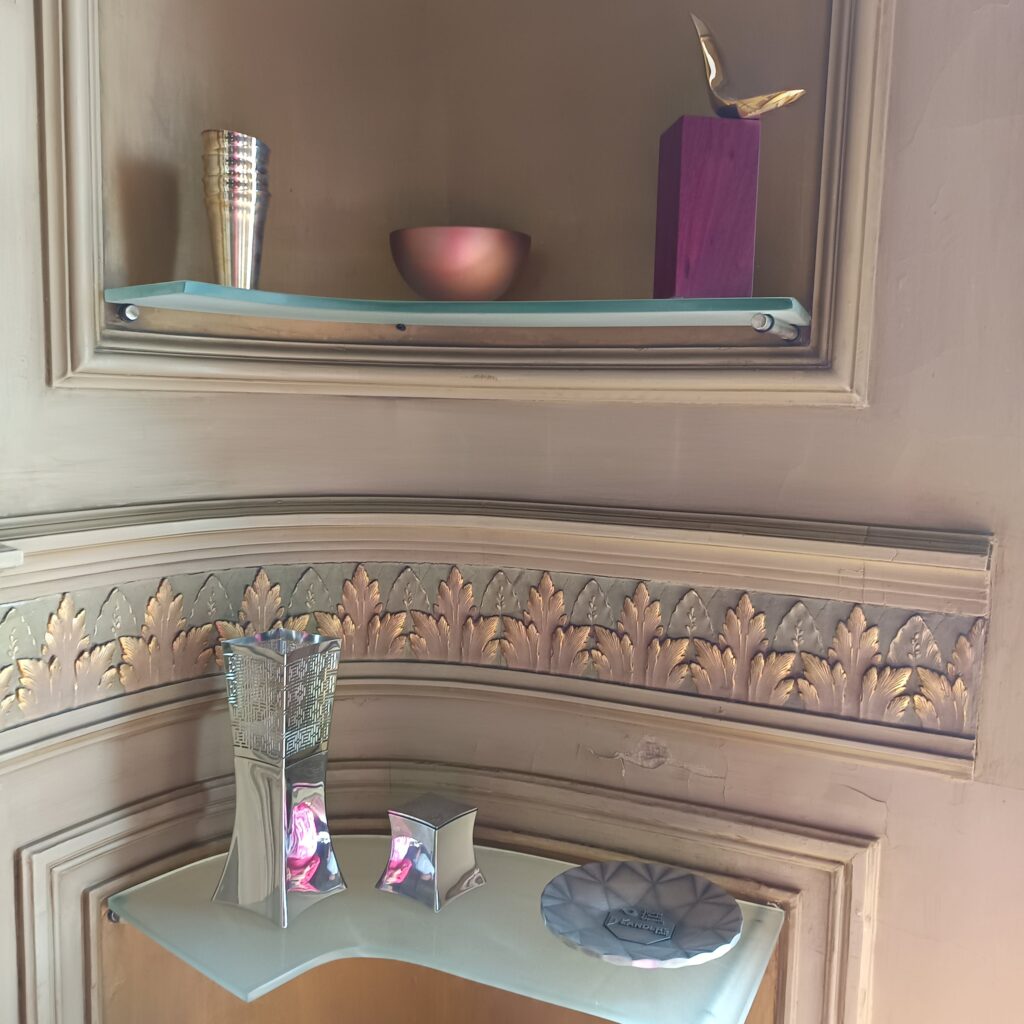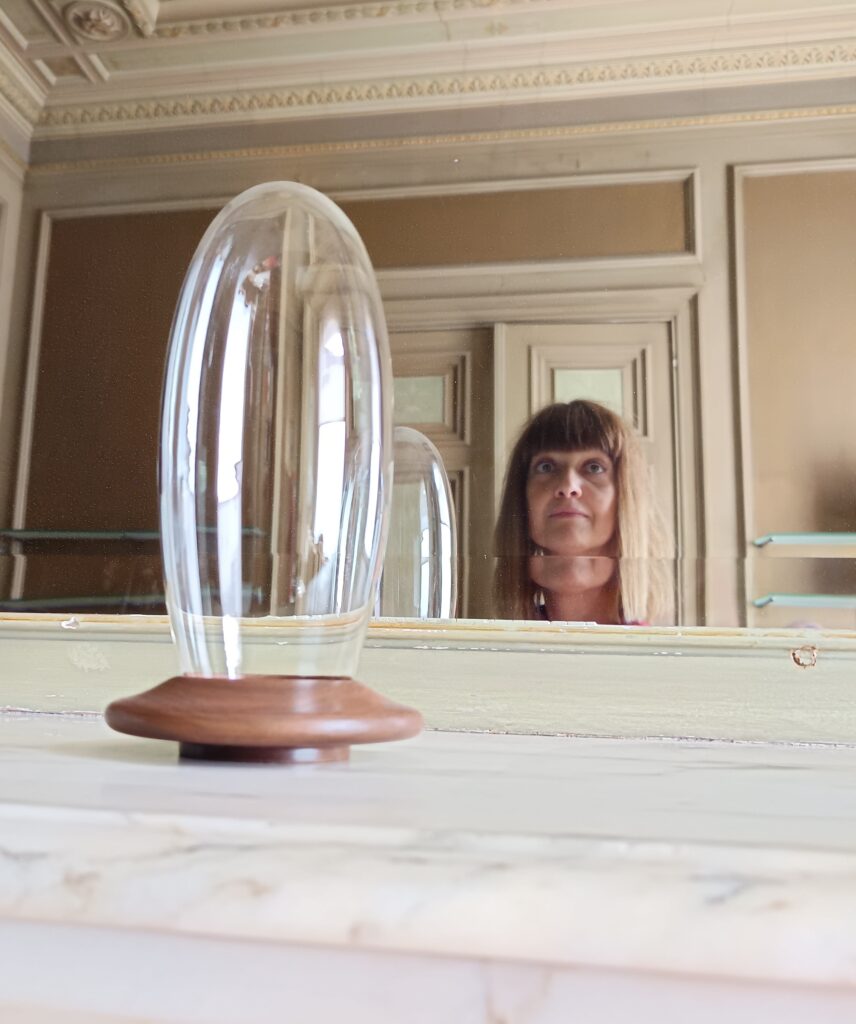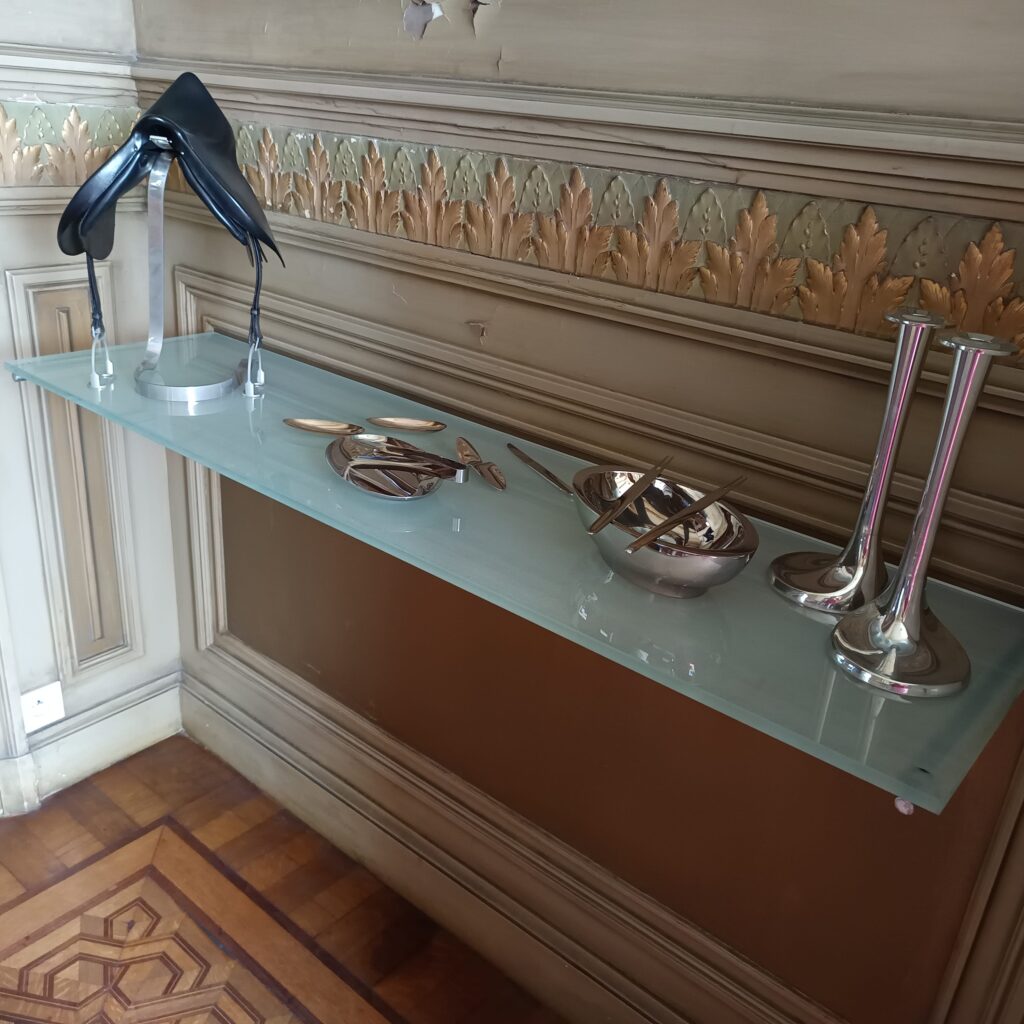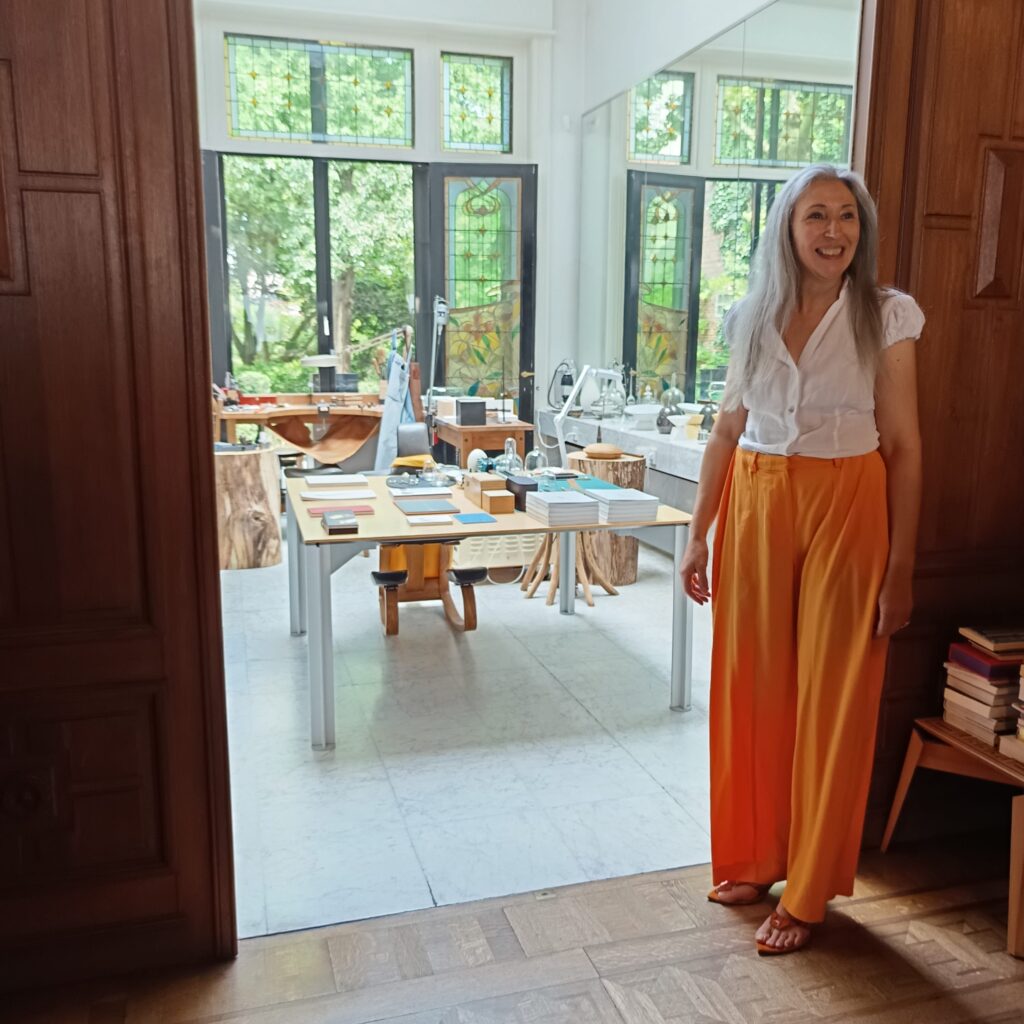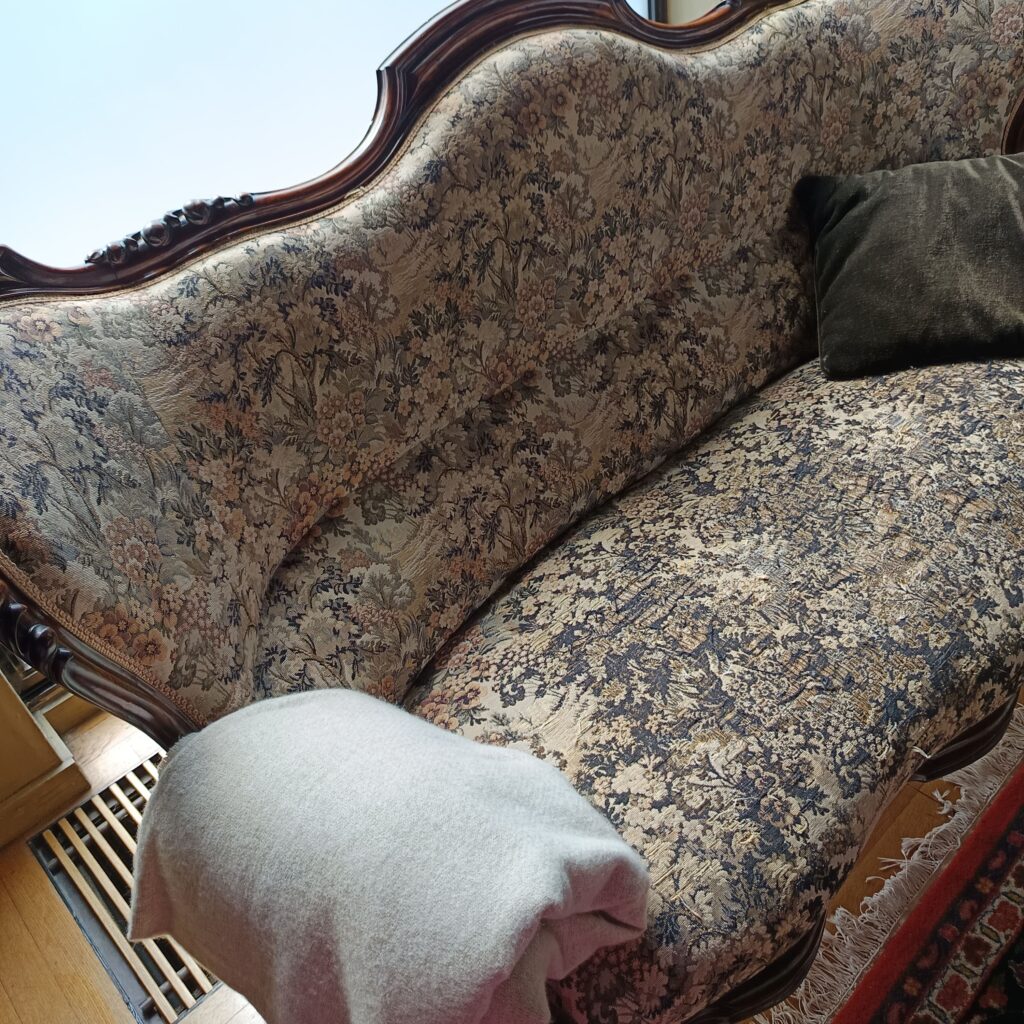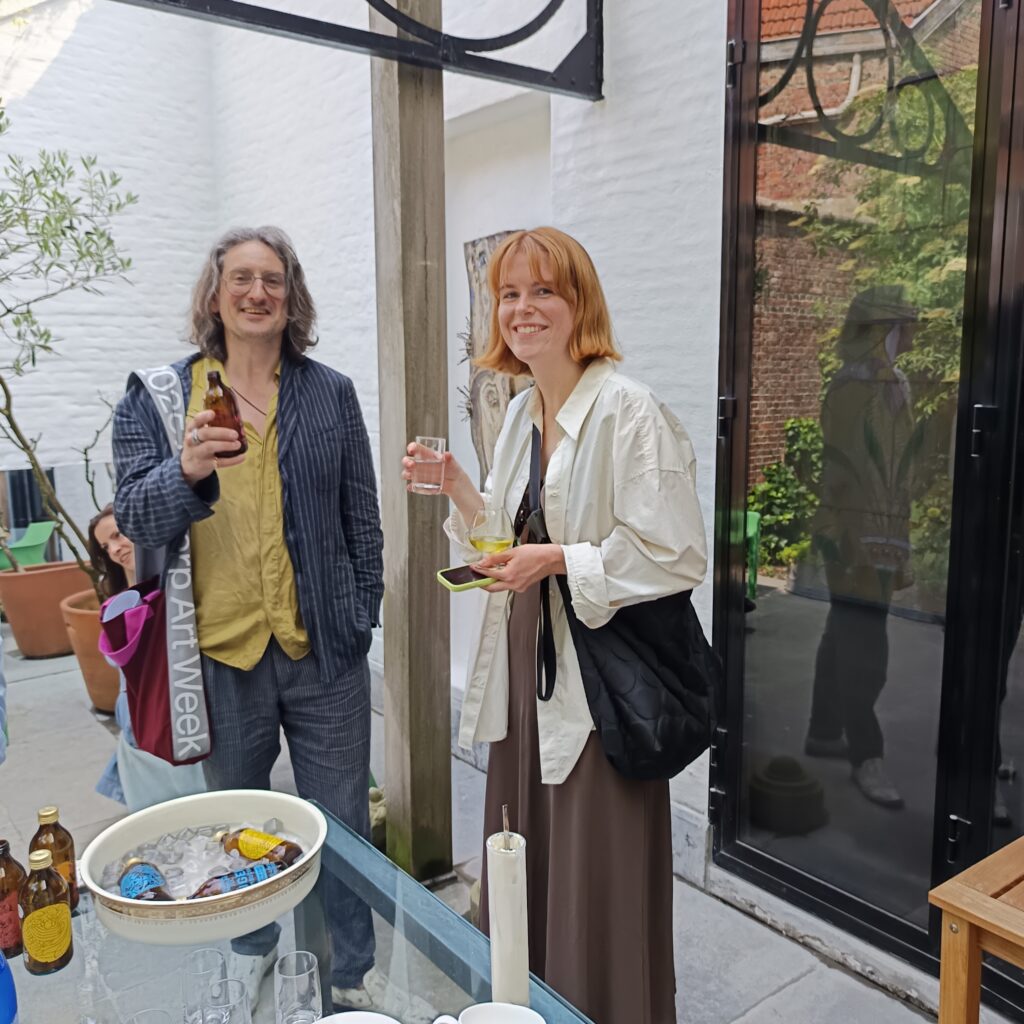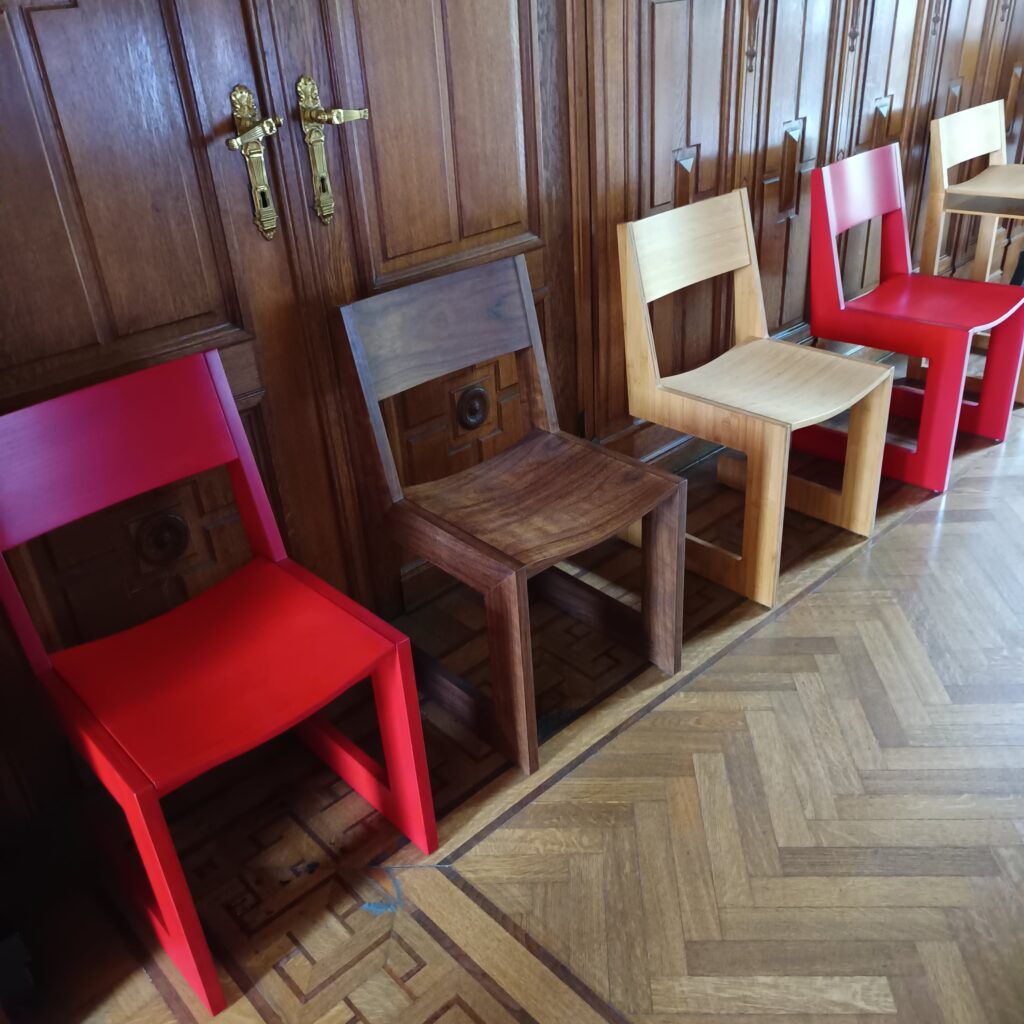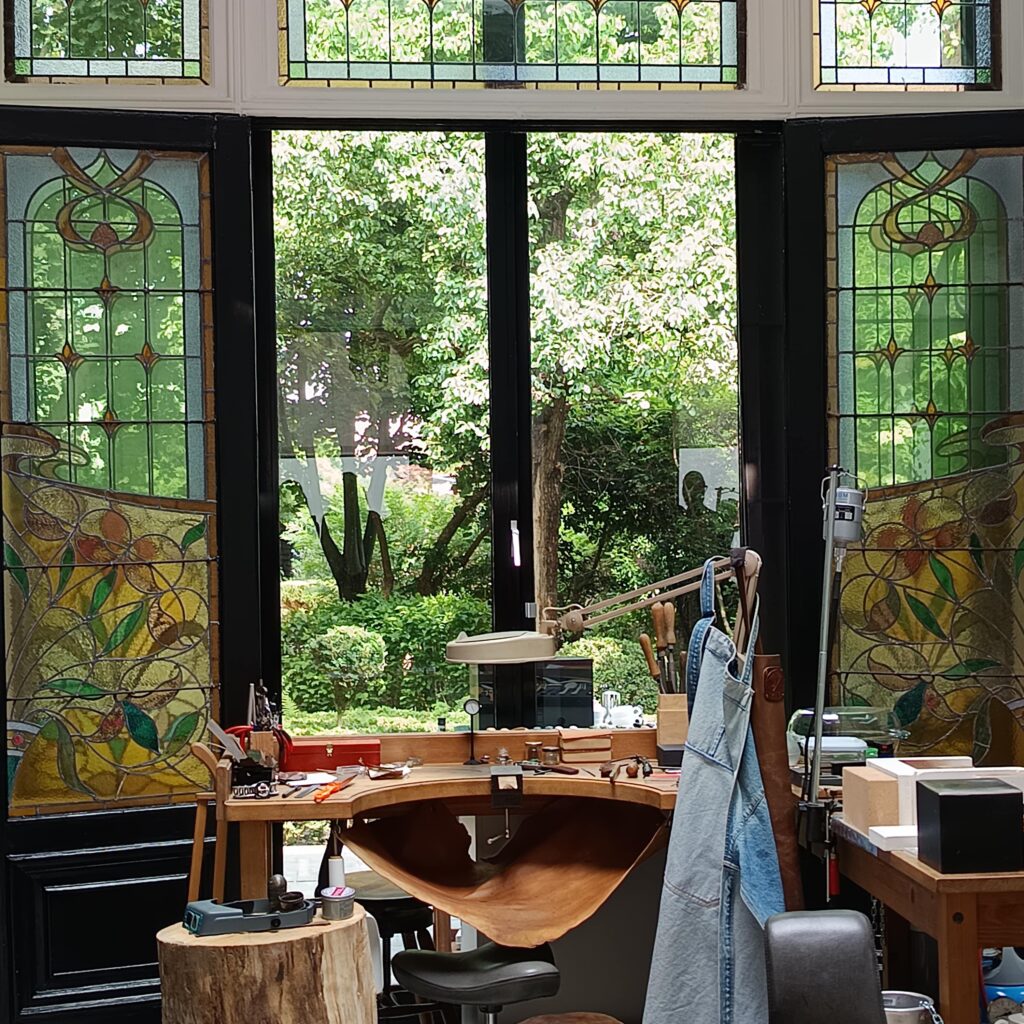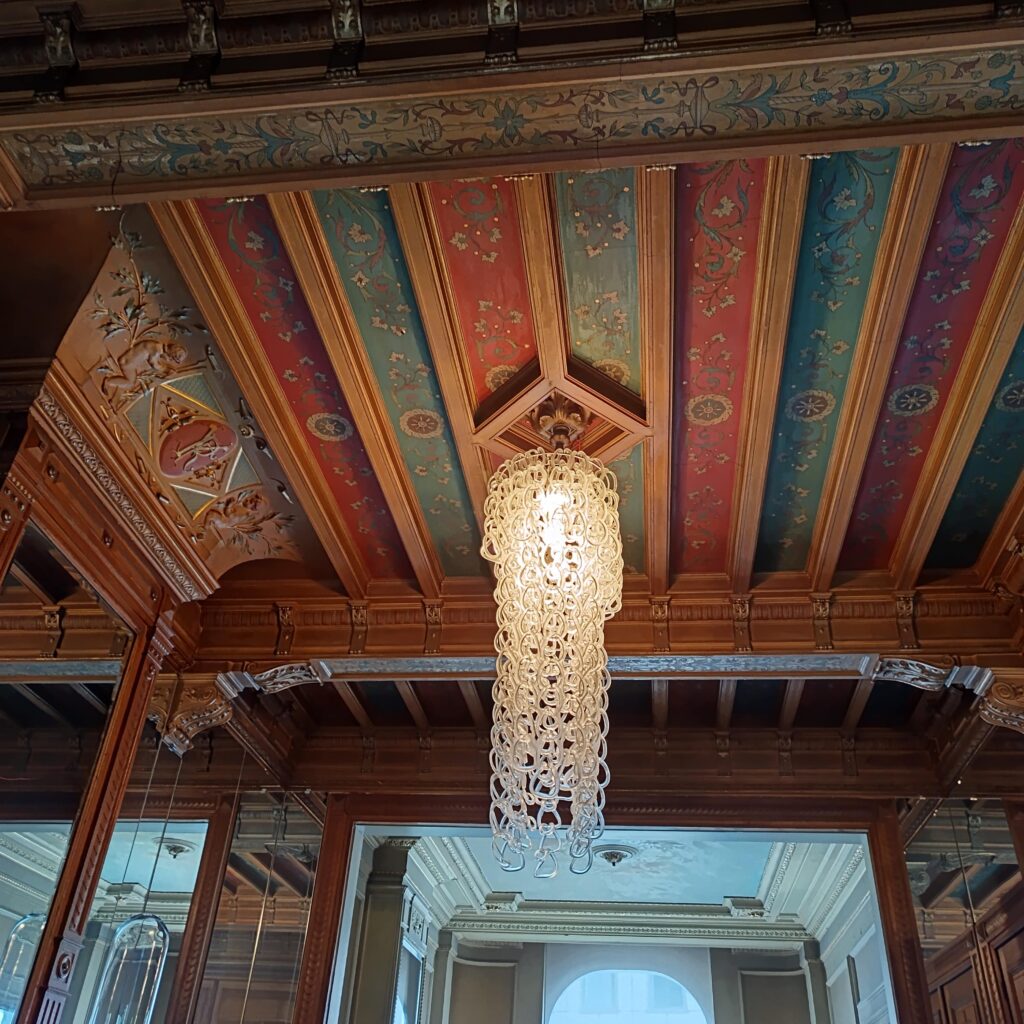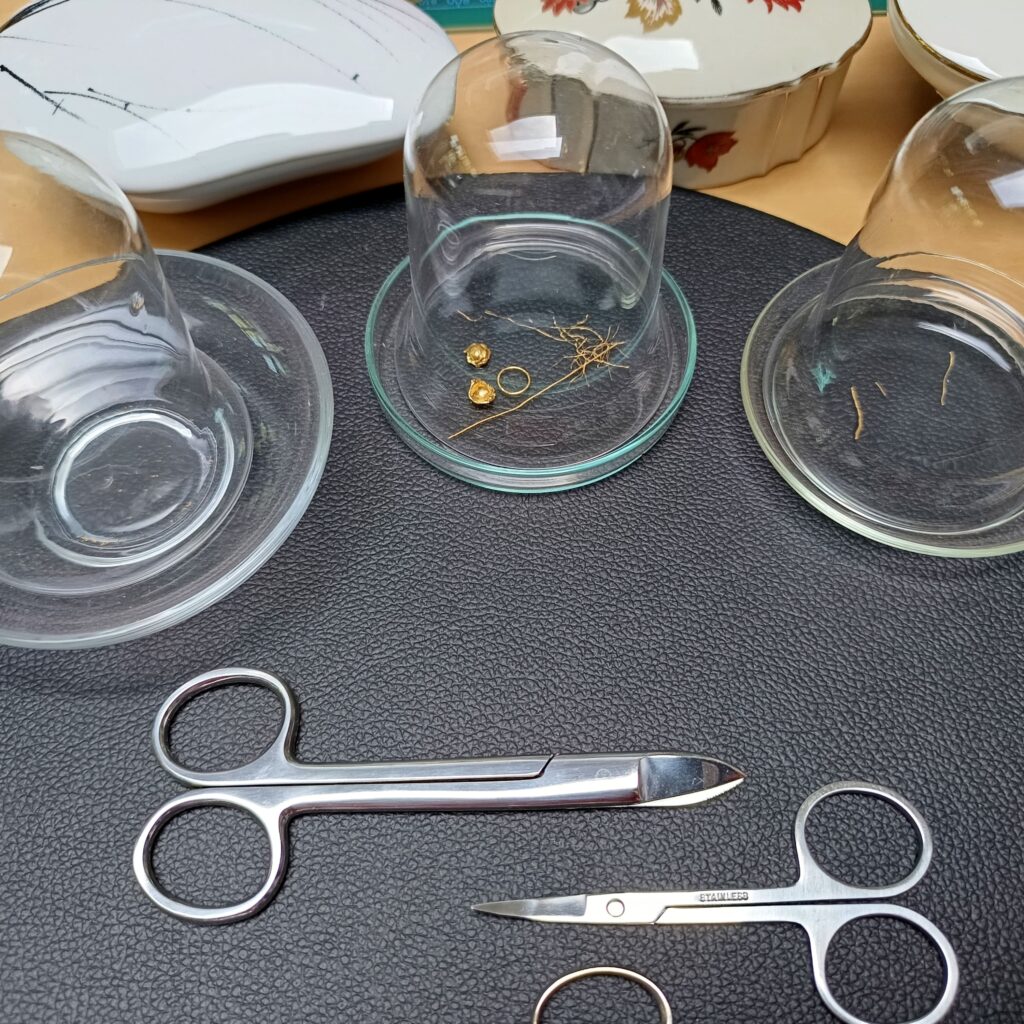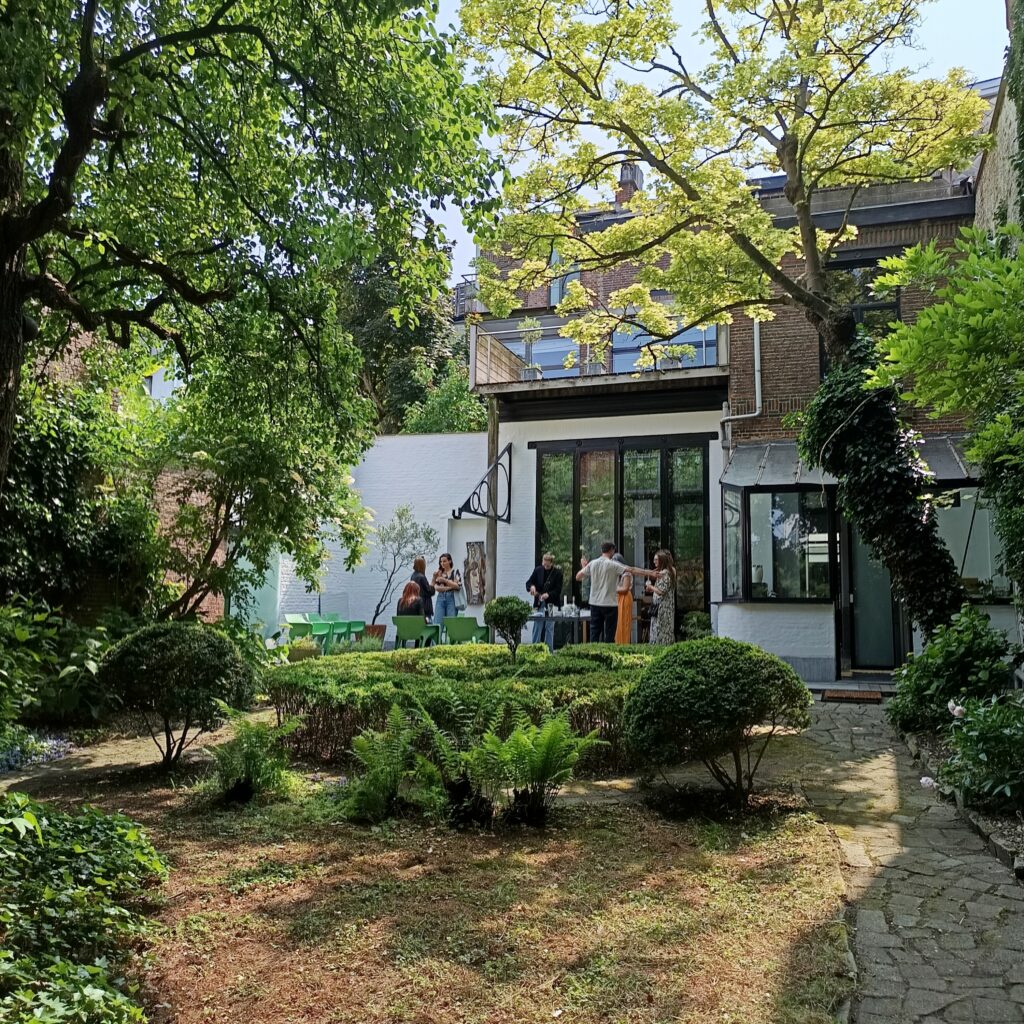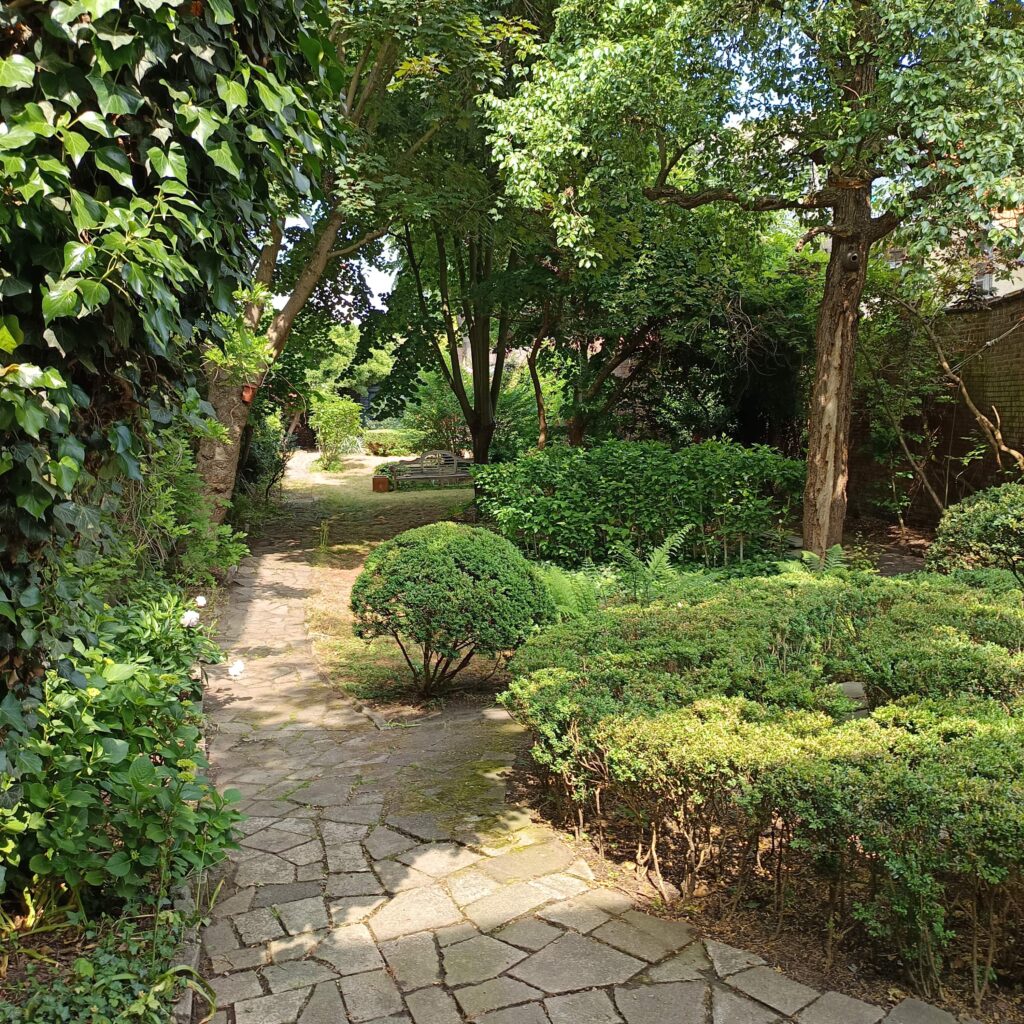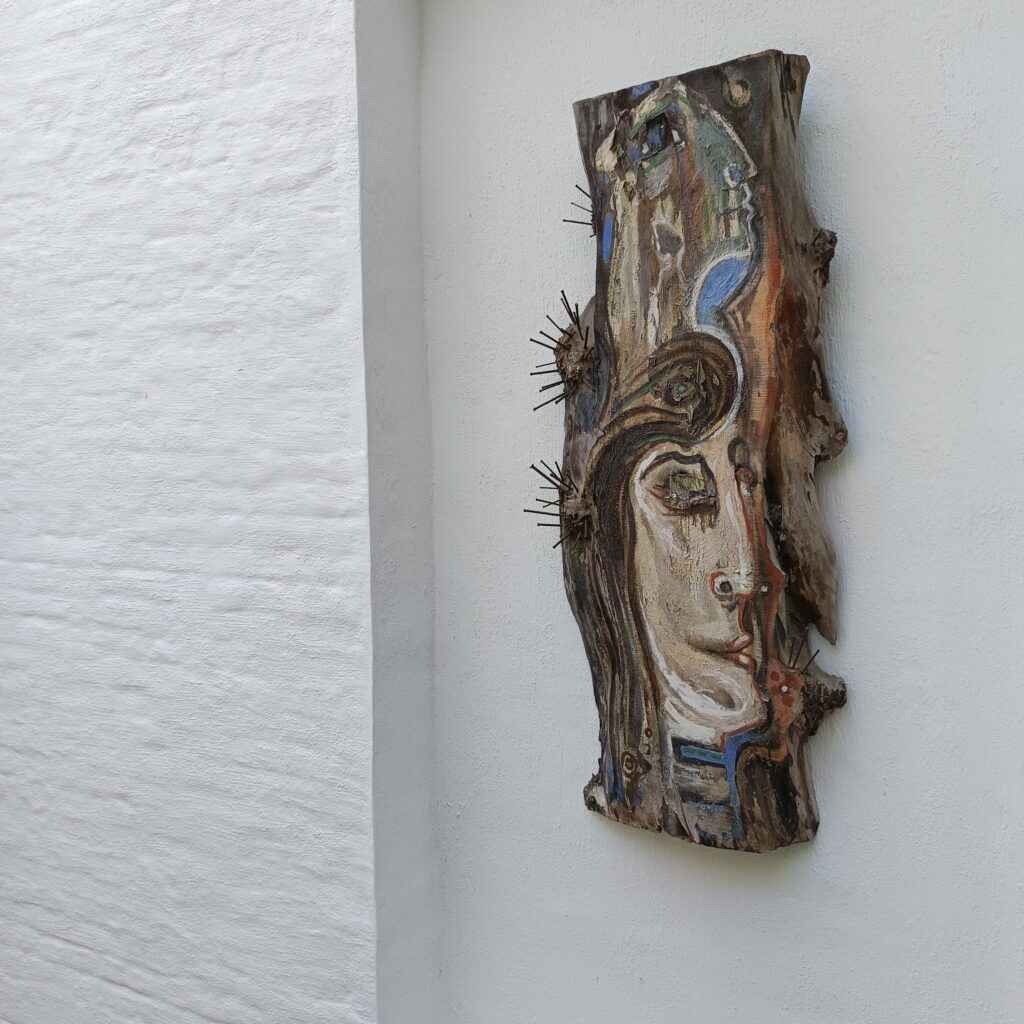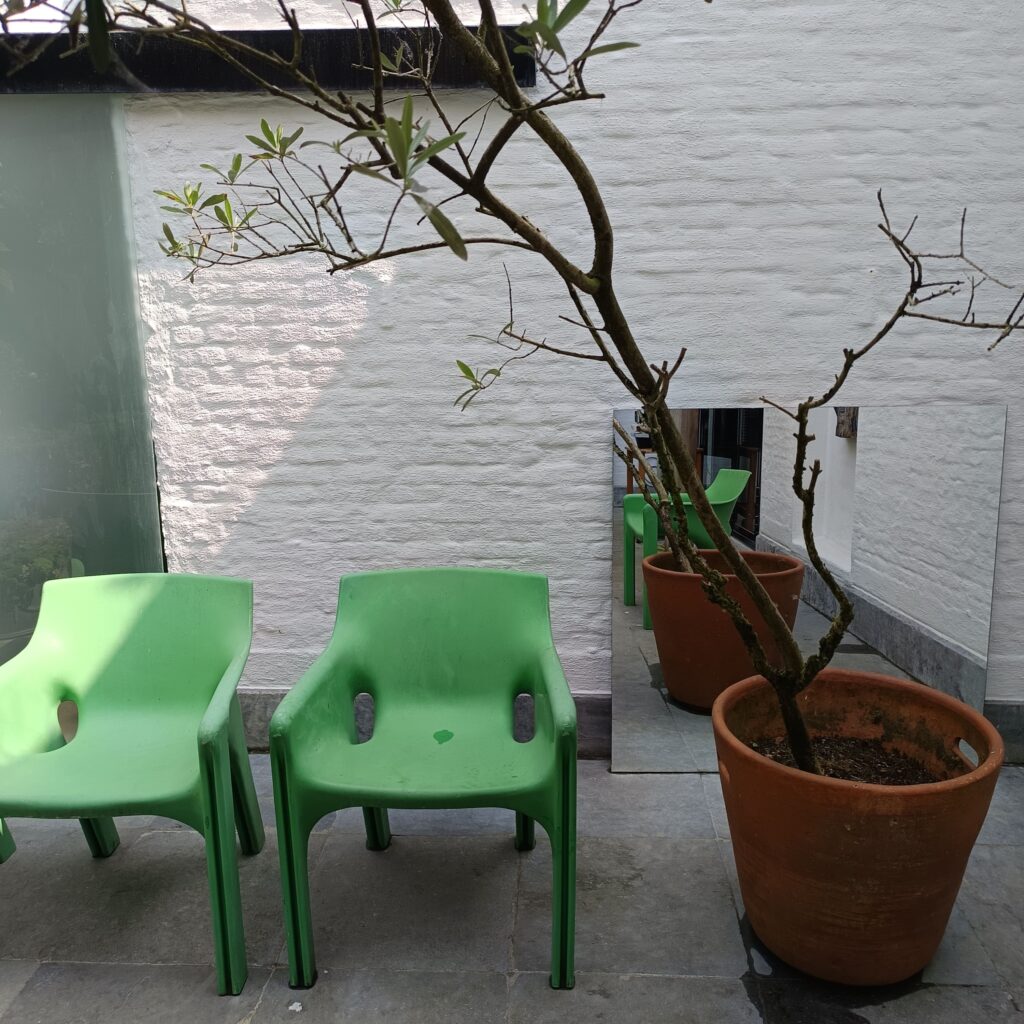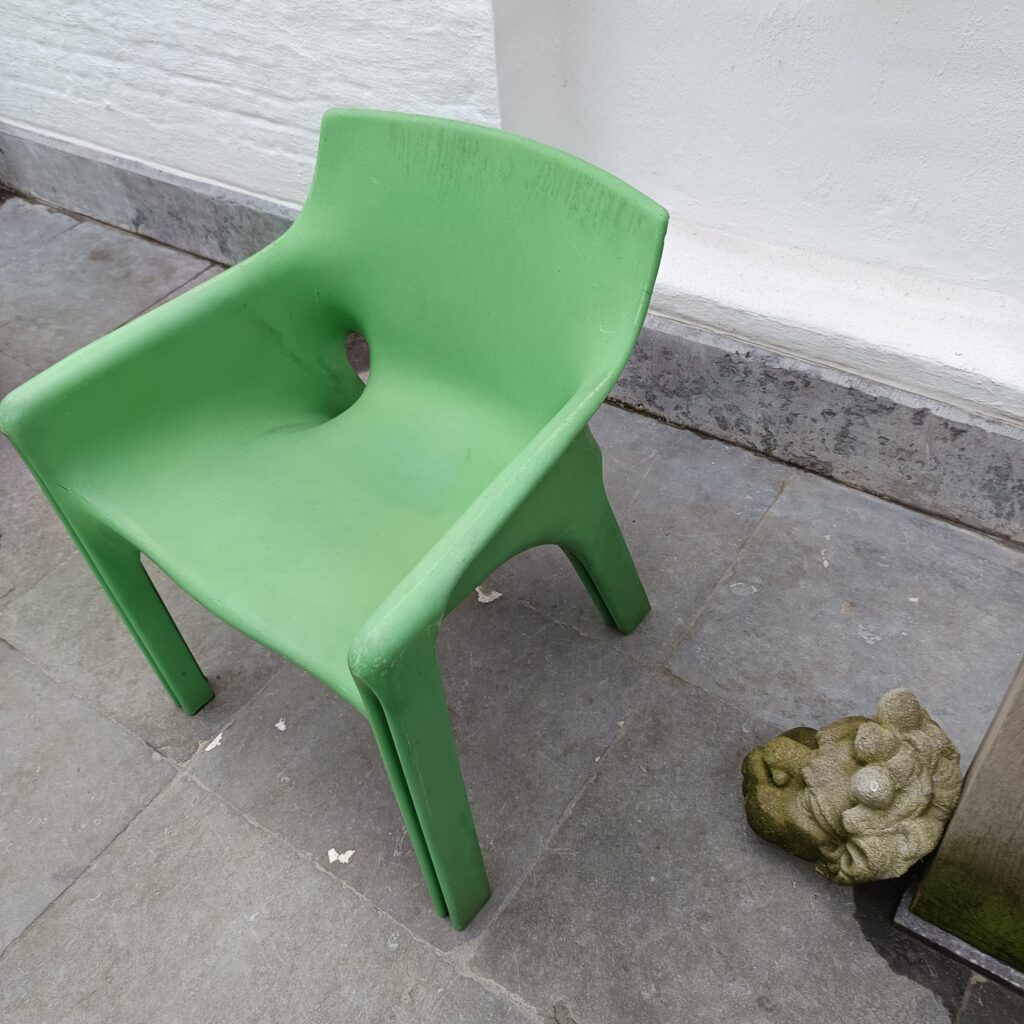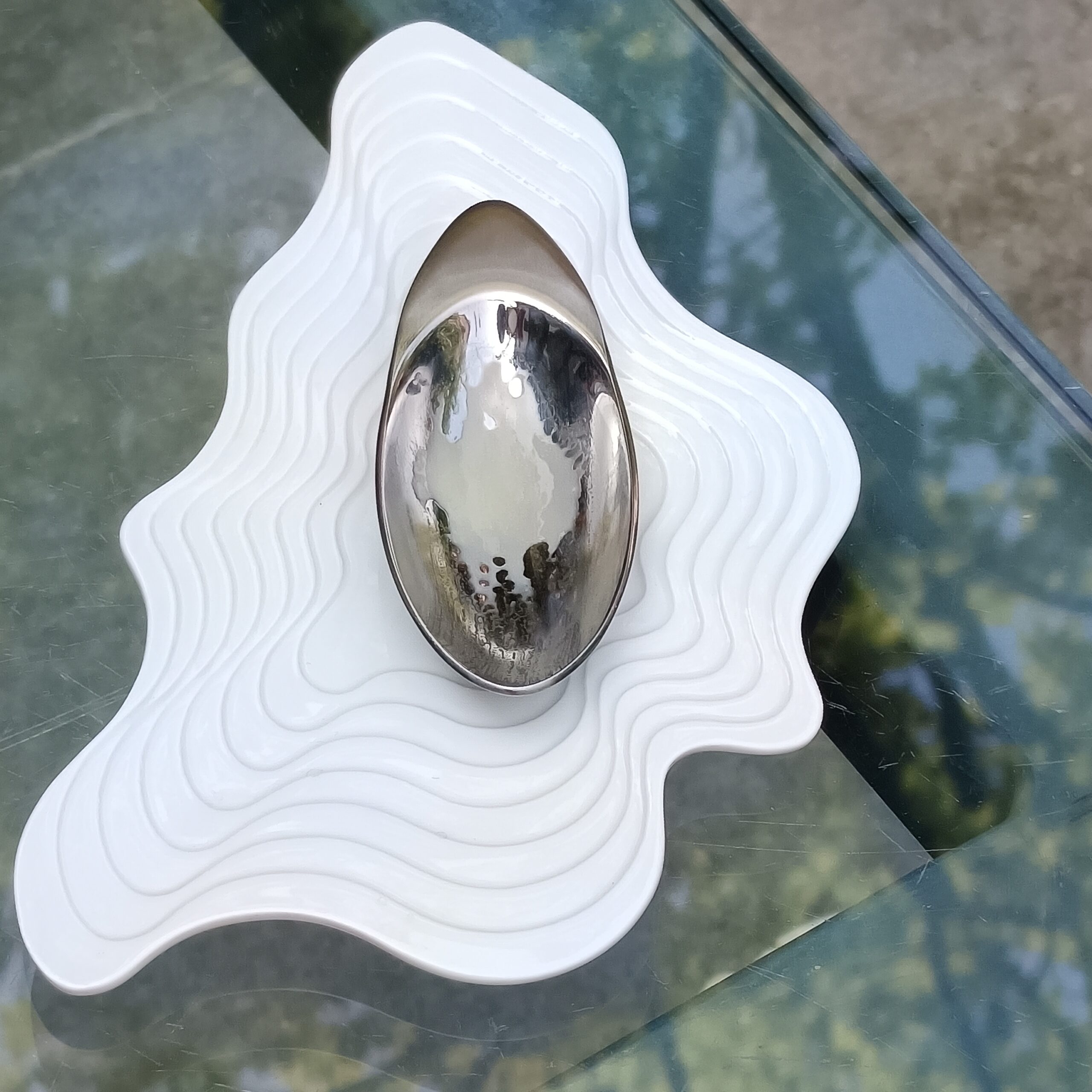The best thing that happened to me during Antwerp Design Week (01–05 June 2025) was an exclusive visit to the bourgeois mansion, known in Dutch as a Herenhuis, of the talented designer and beautiful woman Nedda El-Asmar, who in 2025 received the Lifetime Achievement Gold Award, a prestigious design award from the Henry van de Velde Awards. It must be said that this award loves Nedda and has repeatedly praised her projects. Twelve years ago, our hospitable hostess purchased a neoclassical house built in 1895 by architect Albert Arnou on commission from François Van Roosenbroeck (his family owned several houses on Vliegenstraat). At the time of construction, the area was affluent and close to the city centre. But houses, like people, have a changeable fate. At the time of purchase/sale, it was home to a thriving hairdressing salon, as evidenced by the shelves, which instead of shampoos, were filled with designer works by Bernadette (full name). The building is recognised as an architectural heritage site and is included in the official register of protected buildings in Antwerp.
The designer has subtly and elegantly adapted her ultra-modern design to the 19th-century house. You can encounter her work from the moment you step inside, starting with the Torna door handles she designed for Maison Vervloet. In this way, we were told the story of Nedda’s life and work through the many amazing objects she designed and manufactured. We were treated to a tasting of Elixir d’Anvers, her own interpretation from the ‘Sastrugi’ cutlery collection created for the famous Serax. Something magical. It’s funny that the word ‘sastrugi’ was borrowed from Russian into English, and then into the international design lexicon, as ‘sastrugi’ with the same sound but in a Latinised form. I think you don’t know that it means ‘comb-like snow formations formed by the wind on the surface of snow in polar and winter conditions.’ The STUDIO|Nedda cutlery collection was named after these natural reliefs for their characteristic wave-like, sculptural forms, which the designer tried to convey in the curves of the tableware and cutlery.
The house and its designer inhabitants are a case of ‘objects speaking’. It is no coincidence that in 2024 the designer published the book ‘Questions to objects’ in collaboration with art philosopher Vlad Ionescu. A conceptual reflection on the escape from ‘good’, the metamorphosis taking place in reality, and environmental responsibility. Nedda proposed a radical conceptual view: what if an object is not just a useful item, but also a means of economic or symbolic protection? Can an object that we love and use become a form of protection against the impersonality of the surrounding world? Vlad Ionescu analyses how the value of an object is transformed through materials such as gold: it can be melted down, reimagined, and given a new look.
Today, Nedda has returned to her first profession (she graduated from Jewellery Design, Gold & Silversmithing at the Royal Academy of Fine Arts in Antwerp) and works with recycled gold (yes, including crowns). She has created absolutely stunning jewellery for the Belgian company Diamanti Per Tutti (the diamond is on the side of the ring). I can’t help but mention that the ice for our drinks was diamond-shaped.
